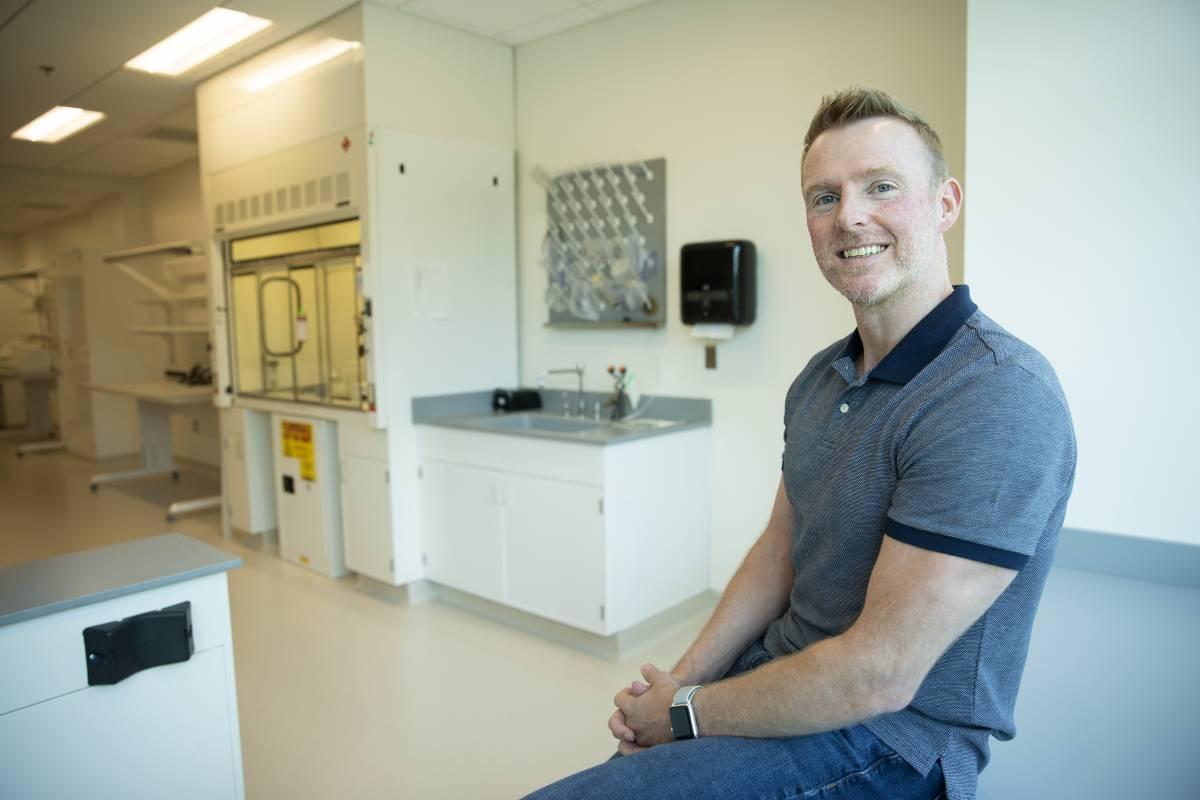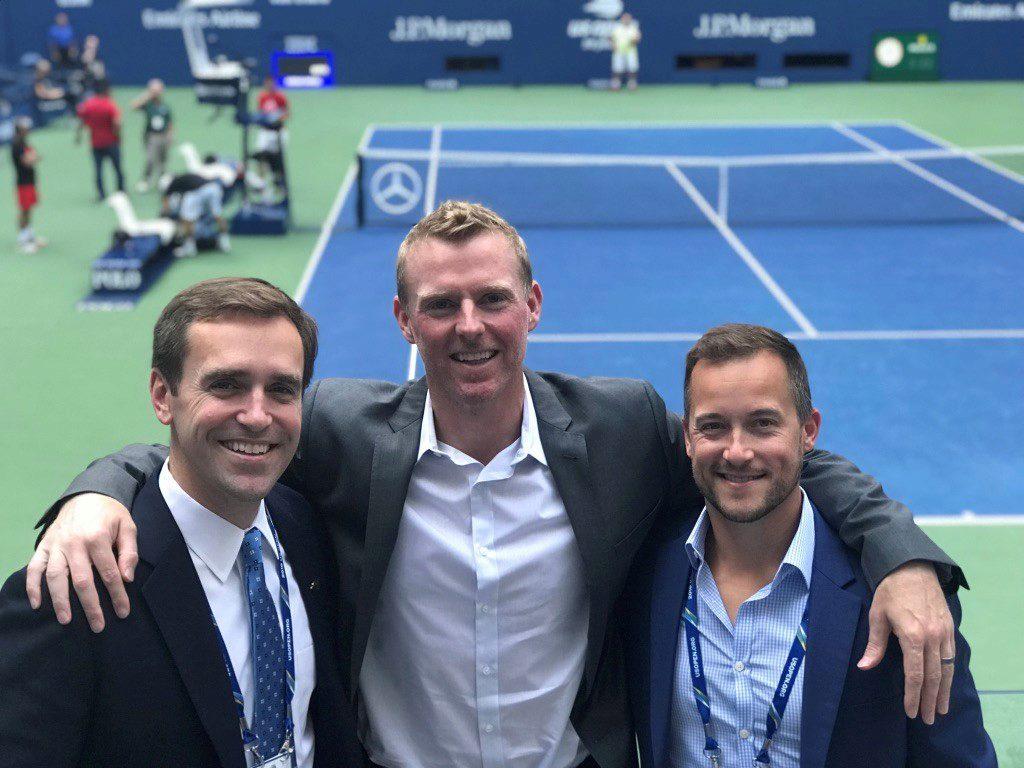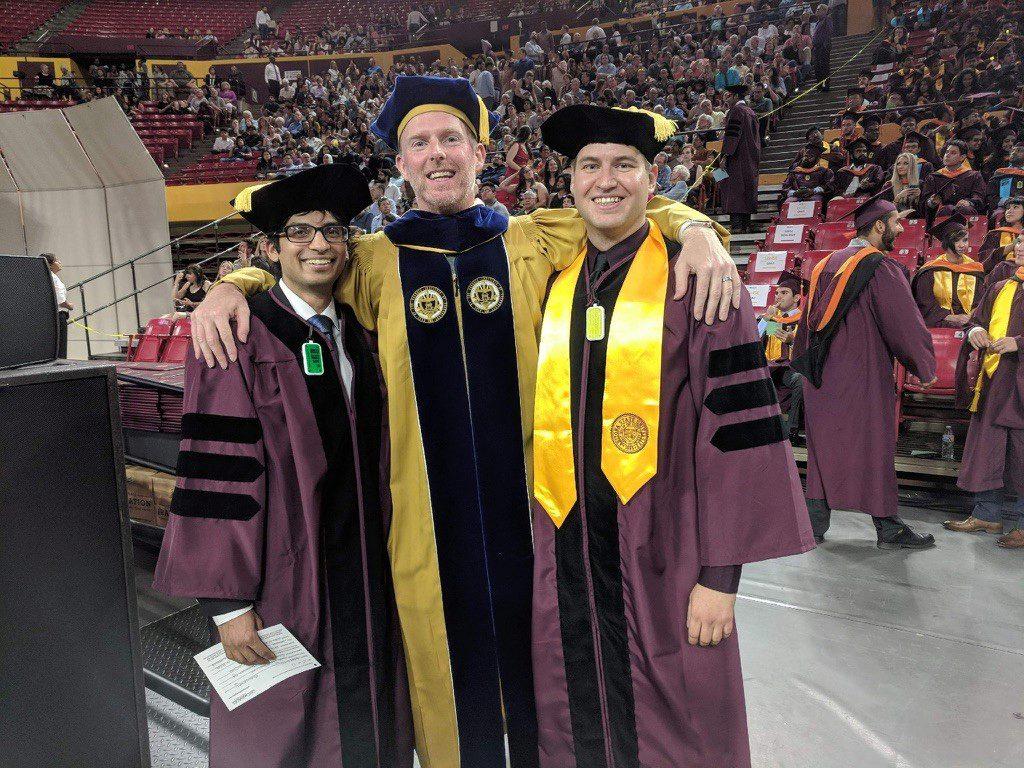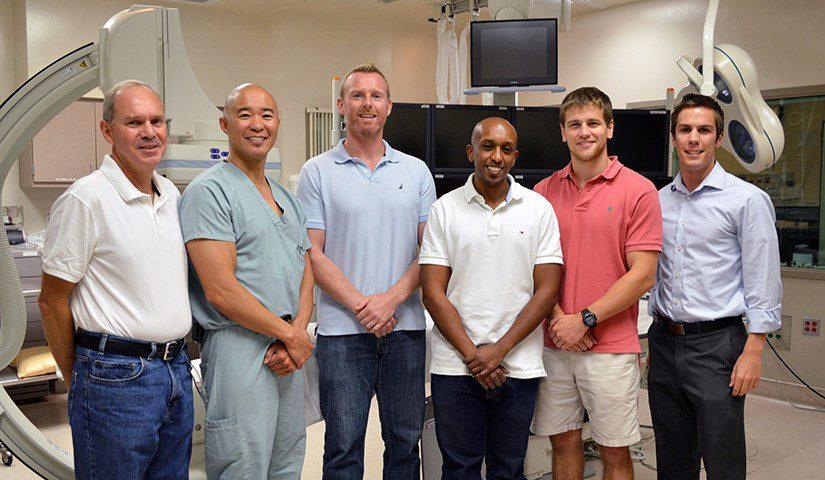Engineer David Frakes’ journey from Wall Street to Silicon Valley and back to Tech

David Frakes’ brand-new biomedical engineering lab might currently be sitting empty, but he has big plans for it. Soon it will be filled with computers, flow loops, 3D printers, students and fresh ideas. Frakes, who has four degrees from Georgia Tech's College of Engineering – a B.S. in electrical, a master’s in mechanical, another master’s in electrical, and a Ph.D. in biomedical engineering – has returned to Tech as an associate professor. He intends to focus on medical devices and computer vision and work with other researchers at Tech to create a more interdisciplinary lab that runs like a startup.
Frakes has a unique story that ultimately brought him back to Tech. He has pivoted between industry and academia for the past 25 years, with a few stops in the startup world along the way. After finishing his degree programs at Tech in 2003, he worked on Wall Street for a few years, but returning to research was always in the back of his mind. So, after working in the financial sector, he was ready to return to academia. An opportunity opened up at Arizona State University (ASU), where Frakes taught and ran a research lab. Seven years into his work at ASU, he took a sabbatical to work at Google, where he stayed for five years. And now, finally, he is back in academia at Tech. That’s Frakes’ journey in a nutshell, but what really drives him is a passion to make an impact.


“I think all of these different fields that I’ve been in – academia, industry, entrepreneurship – have now led me back to Tech,” said Frakes. “I’m an academic who cares about making an impact on industry through my research. The experiences I’ve had in industry and as an entrepreneur really position me uniquely to now do the research I want to do at Tech. So, it’s all those pivots and different experiences that really rounded out my toolbox.”
Excelling at Research
Frakes’ journey shows a circuitous career rather than a traditional straight line. He’s taken detours along that way that have only enhanced his knowledge base and crystallized his long-term goals, particularly in the focus areas of his research.
Most of the biomedical work Frakes has done in academia is on medical devices and computer-based simulation and planning of surgeries, which made him a perfect candidate to come back to the Coulter Department of Biomedical Engineering (BME) as a faculty member. His research program at ASU had two threads: the first focused on medical device modeling for surgical planning and a second was dedicated to computer vision and image processing. Although these distinct lines of research may seem unrelated, Frakes focuses on both because they are his passion.
“I’ve always followed a model of doing what I’m really passionate about, and I think if you do that then things just tend to take care of themselves further down the line,” said Frakes. “If you love what you’re doing then that gives you the opportunity to be great at it.”
And Frakes was right. His medical research has led him back to Tech. And the computer vision work at ASU landed him the opportunity of a lifetime to work at Google and later Apple on the iPhone 11 family of products.
Creating Value in Industry
Initially, it was Frakes’ work at ASU that prompted Google to fund his work in computer vision, and when the time came for Frakes to take a sabbatical, Google recruited him to run a program within the Advanced Technology and Projects (ATAP) group.

“It’s an absolute pressure cooker of rapid technology translation,” said Frakes of the group. “You don’t even walk in with a project, you have to come up with one once you get there, and it was my diverse skillset and innovating mindset that made Google think I was up for this challenge. Google ATAP hires you so you can come in and scale and amplify yourself to do something bigger and go further than you’ve ever gone.”
Granted, technical depth is a prerequisite to work at Google, which Frakes had from both his degrees at Tech and work at ASU. But it was the fact that he was a different type of program leader, willing to take thoughtful risks in the right direction, that set him apart. Frakes was also no stranger to high pressure competition having been a two-sport letterman in football and track and field at Tech.
While at Google, Frakes leveraged the thread of his research focused on computer vision, and his work there led to a colleague bringing him over to the Camera & Photos Division at Apple, where he worked on the iPhone 11 series as Lead of Camera Software.
An Entrepreneurial Spirit
Google also recognized Frakes for his innovative drive and ability to scale a product and take it to market. During his time as a Ph.D. candidate at Tech, Frakes created a startup that is still in existence today, 4-D Imaging, out of VentureLab and then ATDC. This first foray into the startup world led Frakes to continue to pursue entrepreneurship when he got to ASU.
“Product driven research and subsequently commercialization is a big focus of mine, and creating startups helps to take a product to market and really make a difference in people’s lives,” said Frakes.

While at ASU, Frakes started EndoVantage, a company that focuses on neurosurgical planning, which was just acquired by Rapid AI earlier this year. EndoVantage was built in his lab with one of his students and a partner who is head of the Interventional Neuroradiology program at Mayo Clinic. EndoVantage solves a surgical planning problem in a new way that gives doctors new capabilities to determine how they are going to treat patients. Specifically, the Surgical Preview platform lets doctors see how different medical devices will fit a patient before surgery so that they can choose the right one. After the technology became FDA approved and got into the market, EndoVantage was acquired by a larger company.
“Now it’s out there and hopefully saving people’s lives, and it’s being used by doctors at scale,” said Frakes. “So that’s the impact I hope to see with my other work that’s moving forward as well. To be in a market at scale is what I consider to be impactful. I’m passionate about translating my research into real world applications that can impact an industry.”
Next Steps at Tech
Frakes just began his career at Tech this fall. He plans to collaborate early and often with other faculty members who are more established as he gets his lab off the ground. He’s also already teaching.
“My earliest work in the lab will probably be in the medical device space and designing a new device for transcatheter interventions in the brain and heart,” said Frakes. “I have a really strong technological foundation for this that I’m bringing over from ASU, plus the experience from EndoVantage. Once the lab is fully staffed, I’m hoping we can optimize the device design for performance across the patient population.”
Frakes also plans to connect some of the more macro work he’s done with medical devices, specifically for cerebral aneurisms, with the cellular-level work that’s being done with collaborators at Georgia Tech.
“I’d like to bridge the gap to better understand how to treat pathologies like an aneurism with a medical device,” said Frakes. “So, discovering what actually happens to the cellular response that then catalyzes healing.”
Frakes will also work closely with clinicians, as he has in the past. The problems he’s chosen to work with were determined as much by his clinical collaborators as they were by him. The origins of some of Frakes’ most successful research has come from doctors explaining the problem and ideating on how to solve it.
“You must work closely with your clinical collaborators,” said Frakes. “Again, it’s something I’m really passionate about – doing the product-driven research to create something that is going to be useful to a doctor and impact patients.”
Along with setting up his lab and teaching, Frakes is pursuing a new Industry University Collaborative Research Center at Tech. The Center will involve many different companies working with faculty at universities who are doing research that can drive product creation forward in industry.
“I saw this as a perfect opportunity when I got to Tech because I speak both languages – academia and industry – and I’m excited to bring these two things together,” said Frakes. “I’ve run large programs like this at scale before, and I think we can do it at Tech too.”
As for the culture of his lab, Frakes plans to run it less like a conventional lab and more like a startup or a rapid technology translation incubator. He’s excited that it will be an environment where students can innovate and have the space to consider alternatives in biomedical engineering that have never before been explored.
Although right now he’s only a lab of one, the future for Frakes and BME promises innovation, collaboration and a desire to change the medical industry and make a difference in patients’ lives.
“I couldn’t be more excited to be back at Tech and under two great leaders in Susan [Margulies] and Steve [McLaughlin],” said Frakes, who is also excited to be back in the classroom. “I’m teaching an emerging technology law class for engineers right now and then problem-based learning next – both great opportunities to plug in some of the latest advances from industry that our students can really learn from.”